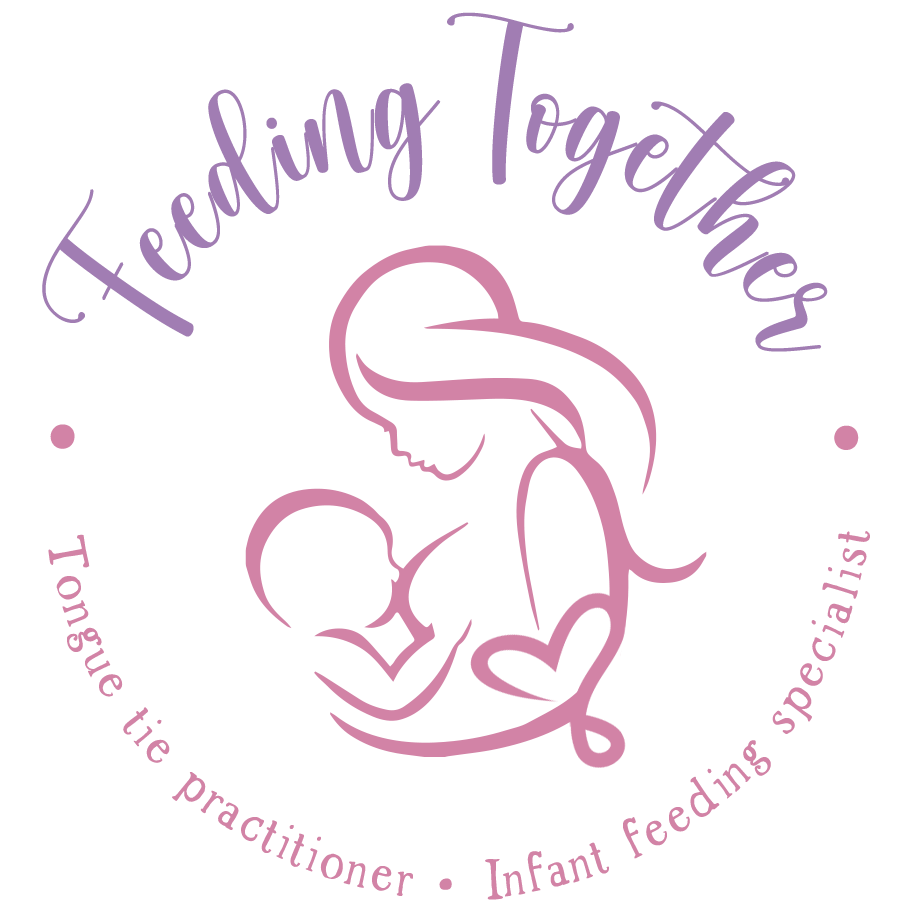Tongue-Tie & Breastfeeding Support from a lactation consultant (IBCLC)
What is a tongue-tie?
Tongue-tie itself can be hereditary and research suggests that it may occur during embryonic development.
A tongue-tie or ankyloglossia is defined as a tongue mobility restriction caused by a tight or short lingual frenulum. If the frenulum is attached at, or close to, the tip of the tongue may look blunt, forked, or have a heart-shaped appearance. Some babies may be born with an obvious visible frenulum under the tongue, but others are more difficult to visualise without specialist help. If the frenulum is attached further back, the tongue may look normal. With specialist professional assessment of your baby’s tongue function and feeding history, you can get expert support in visualising any potential tongue-tie.
In terms of treatment, some babies may benefit from a procedure known as a frenulotomy which releases the restriction of the tongue tie and enables baby to feed more effectively. If you’re concerned about such a treatment, please find more information below or just get in touch.
Key terms
Tongue Tie
Also known as Ankyloglossia.
A tongue mobility restriction due to a tight and/or short lingual frenulum.
Lingual Frenulum
A short or tight piece of skin joining a baby’s tongue to the bottom of their mouth.
Frenulotomy
A treatment to release the restriction of the tongue tie through division.
Signs and symptoms of a tongue tie
Your baby may not display all these signs and there can be other causes for these symptoms so thorough assessment by a practitioner skilled in breastfeeding is essential.
Tongue Tie Division (Frenulotomy)
Not all babies that have feeding issues will require a tongue tie division/frenulotomy but we will discuss if this is a procedure that suits your baby. Following this full discussion and with your consent, I will complete the procedure.
Firstly, your baby will be swaddled in a towel or blanket, which I ask you to bring as added comfort for baby, and their head held gently to avoid movement. The division is performed using sterile, individual use, curved blunt ended scissors and gloves under direct light. It takes seconds and causes little discomfort for your baby. Babies usually cry for a truly short period which settles very quickly with a feed. Anaesthetic is not used, and bleeding is usually minimal.
Can tongue division help with feeding?
The short answer is yes.
However, part of our service is to develop an individualised feeding plan together, one which works for you and your family. It is important that you are aware that the tongue tie procedure can be part of this plan to improve your feeding and that feeding support is essential in improving infant feeding.
Following the division, some mothers and babies will experience an improvement straight away with feeding, whilst others can take a little longer (3-4 weeks).
For more detail, please see the ATP leaflet WHAT IS A TONGUE-TIE?
The infant feeding specialist midwife will talk you through everything thoroughly, so you are fully informed, and any further question will be answered within the clinic appointment or feel free to email through specific questions.
Frequently Asked Questions
Please read this valuable information before your baby’s appointment.
Breastfeeding Support
Breastfeeding may be the most natural way to feed your baby, but it is not always easy. Breastfeeding is a skill that needs to be learnt by both mother and baby. Like learning any new skill, it takes a good teacher and lots of patience to get right.
I have supported many families who have continued breastfeeding despite previous stressful experiences, providing friendly and professional help and support.
If you are having issues, please get in touch for a full assessment and one-to-one support.





